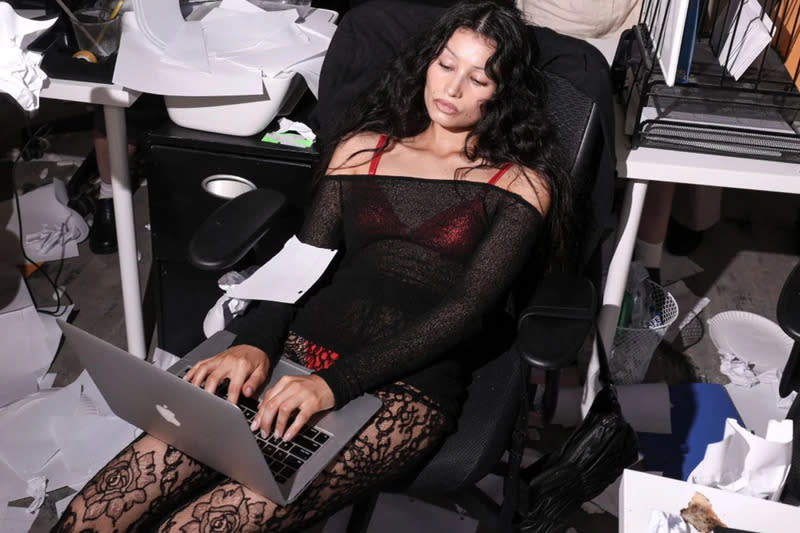Miista Founder Laura Villasenin on Craftsmanship, Community and Collaboration
Whether or not you're familiar with the name Miista, you'll likely have come across the Spanish brand's distinctive boots, mules and heels on many occasions. Just recently, the brand kitted out Charli XCX and Billie Eilish for the "Guess" video and before that, Miista provided custom clothing and footwear for music icons like Horsegiirl and Liniker.
Founded in 2010 as a footwear label by Laura Villasenin, the brand has grown significantly in the last decade, becoming a go-to amongst fashion fans and it-girls everywhere. "Our woman is cerebral, cultural, and witty. She uses trends to her advantage," the founder tells Hypebae.
"She's not trying to be a follower of others and knows how to make her wardrobe her own. Still, she's discerning in terms of price point. She makes her own money and isn't squandering it. When she spends [money], she needs investment pieces, yet something that still offers consistency. She makes conscious purchases," Villasenin adds.
Inspired by Villasenin's Spanish heritage and the cultural melting pot that is London living, Miista favors traditional craftsmanship, distinctive designs and a handmade approach, all the while operating as a family-run business.
As Miista spreads its wings to the Big Apple, we caught up with Villasenin to find out more about the brand's approach to design, community and collaboration.
Read on for the full interview.
View this post on Instagram
How did Miista come about?
I founded Miista in 2010 in East London because I wanted to create an experimental line of footwear with a democratic price point. It is how I design, influenced by many elements, mixing and putting opposites together. I wanted to break the stereotypes of a Spanish brand in terms of identity and shapes, so we took the traditional understanding of craftsmanship and started experimenting with the norms and limitations in production.
The brand initially started out with footwear. How did it evolve into a fully-fledged fashion brand?
There is a little-known history of artisan garment production in A Coruña, north of Spain. By establishing our own factory in this region, we're aiming to help bring back this ready-to-wear industry for ordinary working people in northern Spain. We believe that the human power of real-life artisans simply cannot be replaced by machines. These people not only spent years learning their craft but grew up around parents and grandparents who had helped establish the industry.
We strongly believe that luxury means handmade craftsmanship, and we wish to restore the once-thriving production industry of artisan-made ready-to-wear clothing in the north of Spain. We strongly believe that this is the right thing to do, and while we're a small business, we want to contribute to change in the most effective way we can. We are a Spanish family-run business and we have benefitted from the work of our Spanish craftspeople to make a profitable product. It is only right that we give back to that economy.
Outside of your Spanish roots, where does Miista's inspiration come from?
We keep hearing that it's a difficult time to be in the UK, and it has hit us hard over the last few years. But I keep calling London my home, even though I split my time between Galicia and Alicante (the two regions in Spain where we manufacture clothing and shoes, in that order). London has always been at the forefront of subculture and so have the "Miistas." I tend to take inspiration from activist attitudes and collectives or people who believe that doing the opposite thing is the only way forward. When I am in London, I spend time with friends from Japan and Brazil, and I get immersed in different worlds that can start with a conversation about music or cinema. So, London tends to act as the epicenter of many universes.
View this post on Instagram
Since its inception, Miista has grown a global presence. Why is this important to you?
It has always felt that what connects our women across age, place, or background are the psychographics that define her. That includes values, opinions, attitudes, interests, lifestyles, mindset, and personality. Our woman is cerebral, cultural, and witty. She uses trends to her advantage. She's not trying to be a follower of others and knows how to make her wardrobe her own. Still, she's discerning in terms of price point. She makes her own money and isn't squandering it. When she spends [money], she needs investment pieces, yet something that still offers consistency. She makes conscious purchases. She's loyal and goes back to things she likes.
With that in mind, we make the effort to go and meet with them. We now have four stores (Paris, London, Barcelona, and New York) and organize almost monthly sample sales worldwide. We have done this for over a decade as an exercise to understand Miista from the eyes of those who judge it and decide whether we are worth becoming their go-to brand in this overly saturated premium brand landscape.
What have been some of your favorite areas to bring Miista to?
Berlin has a special place in my heart; the underground music scene does it for me, and it feels very straightforward to receive great feedback when we visit. People get the aesthetic language and the inspiration. But then you travel to places like Antwerp and Chicago, and we overwhelmingly feel that same acknowledgment.
How do you keep up with your community, and what is the importance of a social presence for a global brand like Miista?
Miista owes its meaningful conversations with the community we've had through the years. Whether in person or digitally, I can't conceive losing that personal touch, yet it is very delicate to maintain as the brand grows. Now we have roles fully dedicated to this, while a few years ago it was me answering. But I would confess I still do...
View this post on Instagram
You just opened your first store in New York in a pretty iconic way. What can you tell us about that?
We did the opposite of what everyone advised us to do, and now we've done it again. Pablo, my brother and business partner, moved to the States a few months ago, directly liaising with contractors, and suppliers, and personally managing the project. We wanted it to feel very personal, even though it's a space in this hyper-transactional city. The upside is how proud we are to have done it and all the lessons we learned along the way. We won't ever be a brand where everything feels like machines or AI are in charge. The downside is that there is still so much more to learn and details to look after.
What can you tell us about the concept of collaborations? Is that something Miista is interested in?
We have always understood collaboration from the inside out. Meaning: it's how we make each collection come to life. It's first a relationship between design and craftsmanship, then a collective effort between our creative team and the creative crowd that becomes an extension of the brand when working on projects together. These tend to be related to content or experience. Still to come the day that we get to invite someone into our home to design together, even though through the years, we have had the privilege to have the most exciting conversations with designers.
Who would be on your dream list of collaborations?
It's a very well-kept secret of mine: if you can keep it, Jean-Paul Gaultier.
Finally, what's next for Miista?
We are extremely excited about New York, being physically overseas. We want to create quality experiences with the community that has supported us through the years, while at the same time figuring out our way to logistically avoid Miista filling planes that cross the sky from our operations base in Europe. We are going to keep producing regionally, investing in the artisans who make all the intricately Miista products come to life, and committed to cutting down our supply chain as much as possible as an independent business.



